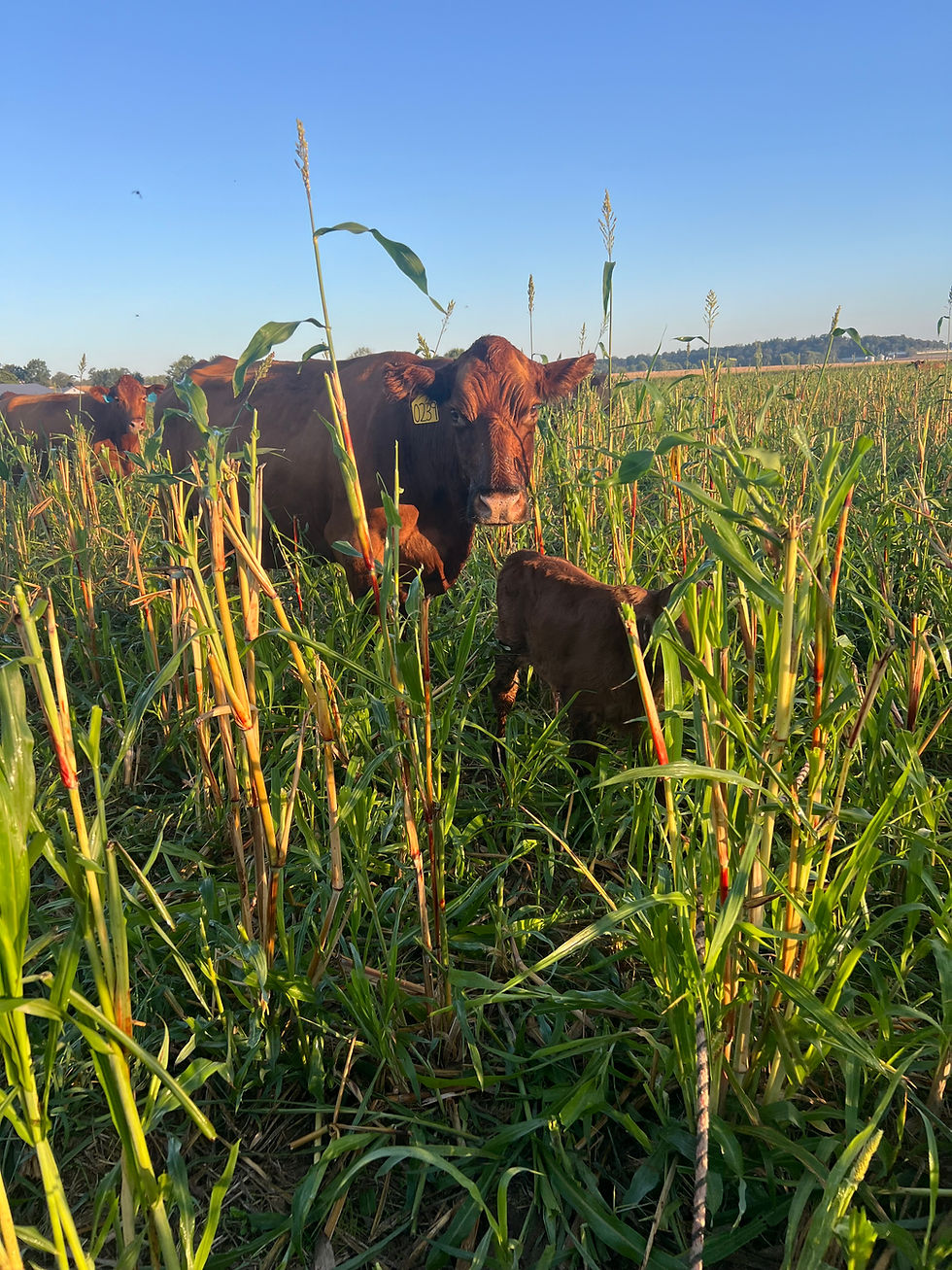Varieties of Cash Crops in the USA
- stecklerfamilymeat
- Jun 23
- 4 min read
Small town Indiana, along with everywhere else in the midwest has always grown predominantly two kinds of cash crops. Corn and soybeans rule the midwest when it comes to row crop farming. It was like that growing up and to this day it remains true. The climate and soil conditions have always been ideal for these crops, which is why they have such a heavy influence in the midwest.
Corn and soybeans take the top two spots when it comes to the biggest crops produced in the United States. However, there are other crops grown throughout the US that include wheat, cotton, canola, sunflowers, peas, sugar cane, rice, sorghum, barley, and more. Now that I am up here in North Dakota working mainly with peas, canola, and sunflowers, I’ve fully realized how many more products are actually produced in the US.

Each region of the country is known for their different sectors of row crops. That is because their climate and soil types for those regions suit some crops much better than others. You want to grow what is going to be the highest yielding crop for your operation, so picking what is going to grow the best tends to be the path to take. Another big factor when deciding what crops to grow is if you can sell them in your area or not. Grain elevators can’t buy every crop out there, because they physically don’t have the capacity or they may not be able to obtain contracts for them. They need to focus on certain crops depending on logistics and if they are making money in the market with those crops. Which is why you also have to determine what crops you produce based on the local grain elevators, because you need to ensure your area has the market for the crops in order to sell them. Here on our farm we actually grow quite a few different crops.
Corn, soybeans, wheat, oats, rye, sorghum, and vetch are the main ones we grow and harvest. Now typically the wheat, oats, rye, and vetch are sown into the ground as a forage mixture in the fall to grow until spring. Depending on the year there will be some other different options in that forage mixture, but the big ones tend to remain the same. When spring time rolls around that forage mixture is chopped to make feed that we use to feed all our cattle. Each summer we grow forage sorghum for our cattle herd to graze. Each pasture that gets planted into sorghum ends up getting grazed multiple times or until it stops growing back. The soybeans that we plant end up getting stored in a grain bin then hauled off and sold at a later date. They are also used as a rotation crop with our corn. Crop rotations are important for soil health, maximizing yields, and controlling diseases and pests. Corn is important on our farm because we use it for so many different things. Feed being the number one finished product we use our corn for. Silage is used all year long to feed our cattle. We have recently started adding high moisture corn, which is harvested at a higher moisture than normal and then ground into a bag. Lastly we shell the corn as normal and use it both to grind for feed or to sell that winter.

Now that I, Kendra, have been up here in North Dakota for a few months I have realized how many different crops there are out there in the world. Besides corn and soybeans, ND’s top crops are wheat and canola. The state is the number one producer of canola. Once you start to venture outside of the corn belt, you start seeing the variety of crops which in turn has so many different benefits for the economy and the environment. Canola is grown for its seeds to produce canola oil and canola meal. The oil is very popular for cooking while the meal is a protein source in livestock feed. Sunflower flowers are also produced for their oil, but also the ever popular edible seed that you see quite often.

What I have learned and worked with so far, the actual operations of each specific crop aren’t that different. Most of the crops I have worked with are sown into the ground with a drill. The only one that is actually put into the ground with a planter is the sunflowers. You still have to give them the nutrients they need to grow and thrive. You also still have to combat weeds just like the crops I am used to. Sunflower production is actually rather similar to corn production with a few varieties of differences. Now the height of the crops and growth stages of the crops are different. A lot of the ones I work with stem on the shorter side when it comes to height versus say twelve foot tall corn and knee to chest high beans. Of course the growth stages are an interesting learning curve that is taking me a bit to memorize so I know when the crops need the inputs that we give them. My time and experiences up here in North Dakota with these crops just keeps getting better!
We are so thankful to be able to grow the small variety of crops that we do, although I am glad that I am able to go learn and work with even more variety! The row crop industry has so many different pieces to the puzzle. So, if you could be or if you are farming crops, what would you choose to produce other than the famous corn and beans?
Let us know if you’d like a more detailed blog on the crops that I work with each day!
Love,
Olivia, Tabitha, Gina, & Kendra




Comments